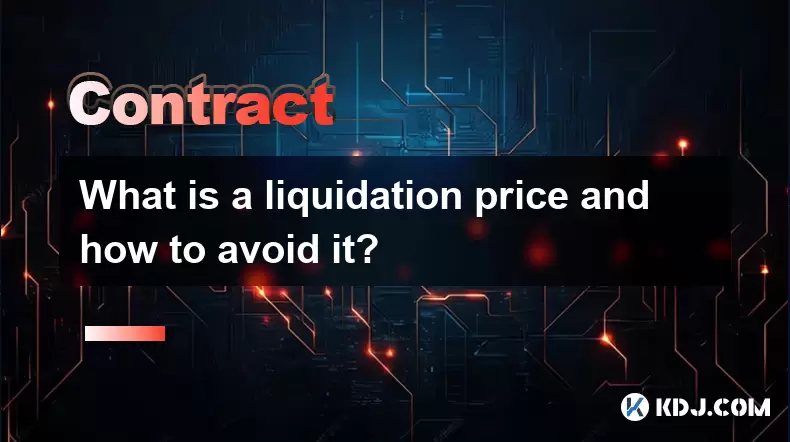-
 Bitcoin
Bitcoin $119300
1.07% -
 Ethereum
Ethereum $3730
3.87% -
 XRP
XRP $3.235
0.29% -
 Tether USDt
Tether USDt $1.000
0.00% -
 BNB
BNB $783.5
1.88% -
 Solana
Solana $188.7
0.25% -
 USDC
USDC $0.0000
-0.01% -
 Dogecoin
Dogecoin $0.2399
-0.44% -
 TRON
TRON $0.3157
2.37% -
 Cardano
Cardano $0.8254
1.94% -
 Hyperliquid
Hyperliquid $42.83
0.14% -
 Stellar
Stellar $0.4372
3.21% -
 Sui
Sui $3.859
4.91% -
 Chainlink
Chainlink $18.53
3.53% -
 Hedera
Hedera $0.2464
0.01% -
 Bitcoin Cash
Bitcoin Cash $519.8
2.46% -
 Avalanche
Avalanche $24.24
2.17% -
 Litecoin
Litecoin $113.7
0.73% -
 UNUS SED LEO
UNUS SED LEO $8.990
0.30% -
 Shiba Inu
Shiba Inu $0.00001390
0.21% -
 Toncoin
Toncoin $3.188
1.49% -
 Ethena USDe
Ethena USDe $1.001
0.02% -
 Polkadot
Polkadot $4.090
-0.91% -
 Uniswap
Uniswap $10.40
4.08% -
 Monero
Monero $326.6
3.12% -
 Bitget Token
Bitget Token $4.627
-0.42% -
 Pepe
Pepe $0.00001281
0.76% -
 Dai
Dai $1.000
0.01% -
 Aave
Aave $291.6
0.98% -
 Cronos
Cronos $0.1269
7.26%
What is a liquidation price and how to avoid it?
In crypto trading, the liquidation price is the level at which a leveraged position is automatically closed to prevent further losses.
Jul 22, 2025 at 12:36 am

Understanding the Liquidation Price in Cryptocurrency Trading
In cryptocurrency trading, especially when using leveraged positions, traders often encounter the term liquidation price. This is the price at which a trader’s position is automatically closed by the exchange to prevent further losses. It acts as a safeguard mechanism for both the trader and the platform, ensuring that traders don’t end up owing more than their initial investment.
The liquidation price depends on several factors including the leverage used, the position size, and the amount of collateral deposited. Exchanges calculate this value based on the margin requirements and the risk associated with holding the leveraged position. If the market moves against the trader and reaches this critical threshold, the system will automatically liquidate the position.
How Is the Liquidation Price Calculated?
Exchanges use proprietary formulas to determine the exact liquidation price, but most follow a similar logic. The general idea is to assess how much loss a position can absorb before it becomes unsustainable. Here's a simplified version of the calculation:
- Determine the initial margin (the percentage of the total trade value required to open a leveraged position).
- Calculate the maintenance margin (a lower threshold that must be maintained to keep the position open).
- Subtract unrealized losses from the equity in the account.
- If the equity drops below the maintenance margin level, the liquidation process begins.
For example, if you open a 10x leveraged long position worth $10,000 using $1,000 as collateral, your liquidation price would be close to the point where your unrealized losses exceed $900. At that point, the system considers your position too risky and closes it.
Risks Associated With Liquidation Prices
Traders who fail to understand or monitor their liquidation price expose themselves to significant risks. One of the biggest dangers is market volatility—sudden price swings can trigger liquidations faster than a trader can react. In highly leveraged trades, even small price movements can lead to complete loss of capital.
Another risk involves slippage during liquidation. When a large number of traders face liquidation simultaneously, the market may not have enough liquidity to close all positions at the expected price. This results in worse-than-expected execution prices, further eroding the trader’s balance.
Moreover, some traders fall into the trap of over-leveraging, believing they can predict market direction accurately. However, no one can fully control market behavior, and high leverage amplifies both gains and losses. Understanding where your liquidation level lies helps avoid such pitfalls.
Strategies to Avoid Liquidation
Avoiding liquidation starts with sound risk management. Traders should always know their liquidation price before entering any leveraged trade. Most platforms display this information clearly before confirming a trade.
Here are some practical strategies to help avoid getting liquidated:
- Use lower leverage: Reducing leverage increases the distance between the current price and your liquidation level, giving your trade more room to breathe.
- Set stop-loss orders: These allow you to manually exit a losing trade before reaching the automatic liquidation point.
- Monitor your margin level: Keep track of your available margin and adjust positions accordingly.
- Add more collateral: Increasing your margin buffer raises the liquidation threshold, helping protect your position during volatile periods.
- Diversify positions: Don’t put all your funds into a single leveraged trade. Spreading risk across multiple assets reduces exposure to sudden market shifts.
By implementing these practices, traders can significantly reduce the likelihood of facing an unexpected liquidation event.
Using Tools to Track Your Liquidation Price
Many exchanges provide tools and dashboards that show your current liquidation price in real time. These interfaces help traders visualize how close they are to being liquidated and what adjustments might be necessary.
Some advanced traders use third-party apps and calculators to simulate different scenarios. These tools allow users to input variables like entry price, leverage, and position size to see exactly where the liquidation level falls. Additionally, setting up alerts via email or mobile notifications ensures traders are aware when their positions approach dangerous levels.
It's also beneficial to study the funding rates and interest costs associated with holding leveraged positions over time. These fees can eat into profits and indirectly affect the margin available to sustain a trade.
Frequently Asked Questions (FAQ)
What happens after my position gets liquidated?
Once a position is liquidated, the system closes it at the best available price. Any remaining collateral after covering losses is returned to your account. However, in extreme cases of slippage, your balance could drop to zero.
Can I recover funds after a liquidation?
No, once a liquidation occurs, the funds used as margin are considered lost. There is no recovery process for these funds, which is why monitoring your liquidation price is crucial.
Do all exchanges have the same liquidation mechanisms?
No, each exchange has its own rules and algorithms for calculating liquidation prices. Some offer tiered systems where partial liquidations occur before full closure, while others enforce full liquidation at a specific threshold.
Is liquidation the same as a stop-loss?
No, a stop-loss is a manual order placed by the trader to limit losses, whereas liquidation is an automatic action taken by the exchange when margin requirements are breached.
Disclaimer:info@kdj.com
The information provided is not trading advice. kdj.com does not assume any responsibility for any investments made based on the information provided in this article. Cryptocurrencies are highly volatile and it is highly recommended that you invest with caution after thorough research!
If you believe that the content used on this website infringes your copyright, please contact us immediately (info@kdj.com) and we will delete it promptly.
- Bitcoin, Jim Cramer, and the US Deficit: A Wall Street Story
- 2025-07-25 10:30:11
- TGEs, Scalability & Privacy Tech: Decoding the Future of Blockchain
- 2025-07-25 10:30:11
- Ben Askren, FUNKY Memecoin, and the Fallout: A New York Minute
- 2025-07-25 10:50:11
- TRON, Crypto Payroll, and Stablecoins: A New York Minute on the Future of Finance
- 2025-07-25 08:30:11
- WazirX, Revote, and Crypto Unlock: A New York Minute on the Latest Developments
- 2025-07-25 06:50:11
- Hong Kong Stablecoin Regulation: Navigating the Hype and Hurdles
- 2025-07-25 08:30:11
Related knowledge

Why is my Bitstamp futures position being liquidated?
Jul 23,2025 at 11:08am
Understanding Futures Liquidation on BitstampFutures trading on Bitstamp involves borrowing funds to open leveraged positions, which amplifies both po...

Does Bitstamp offer inverse contracts?
Jul 23,2025 at 01:28pm
Understanding Inverse Contracts in Cryptocurrency TradingIn the realm of cryptocurrency derivatives, inverse contracts are a specific type of futures ...

How to find your Bitstamp futures trade history?
Jul 23,2025 at 08:07am
Understanding Bitstamp and Futures Trading AvailabilityAs of the current state of Bitstamp’s service offerings, it is critical to clarify that Bitstam...

Can I use a trailing stop on Bitstamp futures?
Jul 23,2025 at 01:42pm
Understanding Trailing Stops in Cryptocurrency TradingA trailing stop is a dynamic type of stop-loss order that adjusts automatically as the price of ...

Can I use a trailing stop on Bitstamp futures?
Jul 25,2025 at 02:28am
Understanding Trailing Stops in Cryptocurrency Futures TradingA trailing stop is a dynamic type of stop-loss order that adjusts automatically as the m...

What are the trading hours for Bitstamp contracts?
Jul 24,2025 at 11:56am
Understanding Bitstamp and Contract Trading AvailabilityBitstamp is one of the longest-standing cryptocurrency exchanges, established in 2011 and head...

Why is my Bitstamp futures position being liquidated?
Jul 23,2025 at 11:08am
Understanding Futures Liquidation on BitstampFutures trading on Bitstamp involves borrowing funds to open leveraged positions, which amplifies both po...

Does Bitstamp offer inverse contracts?
Jul 23,2025 at 01:28pm
Understanding Inverse Contracts in Cryptocurrency TradingIn the realm of cryptocurrency derivatives, inverse contracts are a specific type of futures ...

How to find your Bitstamp futures trade history?
Jul 23,2025 at 08:07am
Understanding Bitstamp and Futures Trading AvailabilityAs of the current state of Bitstamp’s service offerings, it is critical to clarify that Bitstam...

Can I use a trailing stop on Bitstamp futures?
Jul 23,2025 at 01:42pm
Understanding Trailing Stops in Cryptocurrency TradingA trailing stop is a dynamic type of stop-loss order that adjusts automatically as the price of ...

Can I use a trailing stop on Bitstamp futures?
Jul 25,2025 at 02:28am
Understanding Trailing Stops in Cryptocurrency Futures TradingA trailing stop is a dynamic type of stop-loss order that adjusts automatically as the m...

What are the trading hours for Bitstamp contracts?
Jul 24,2025 at 11:56am
Understanding Bitstamp and Contract Trading AvailabilityBitstamp is one of the longest-standing cryptocurrency exchanges, established in 2011 and head...
See all articles

























































































